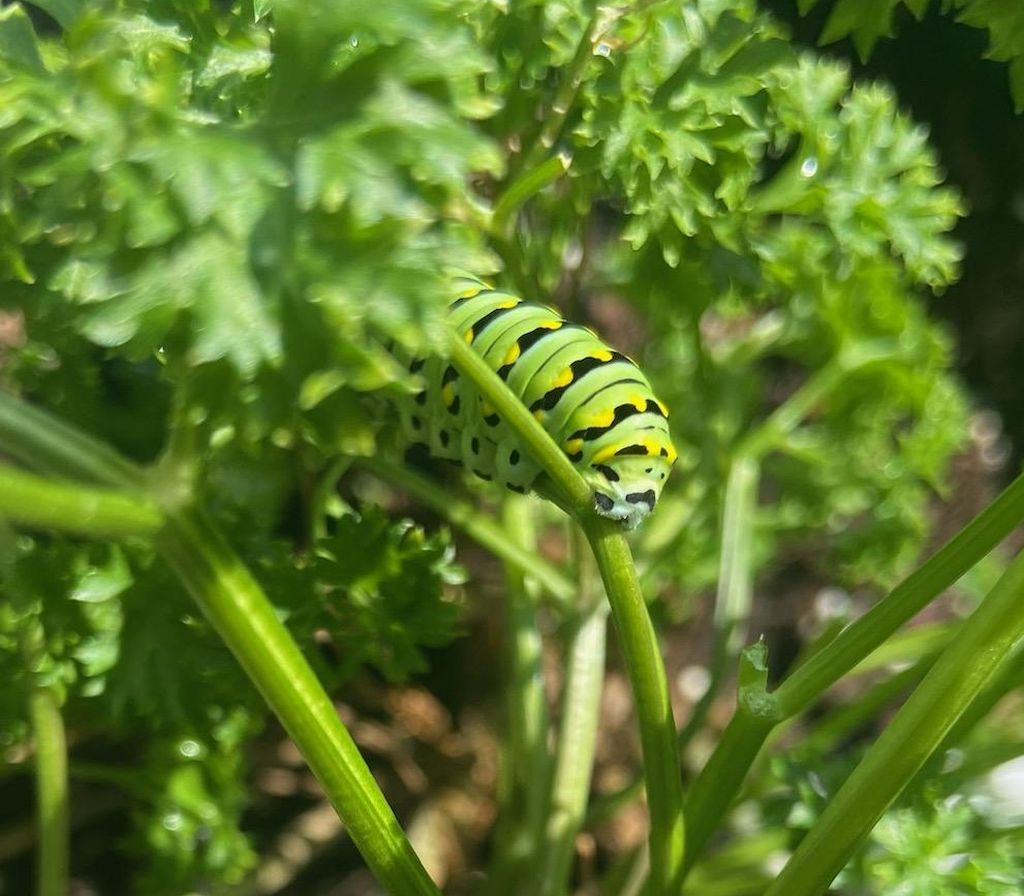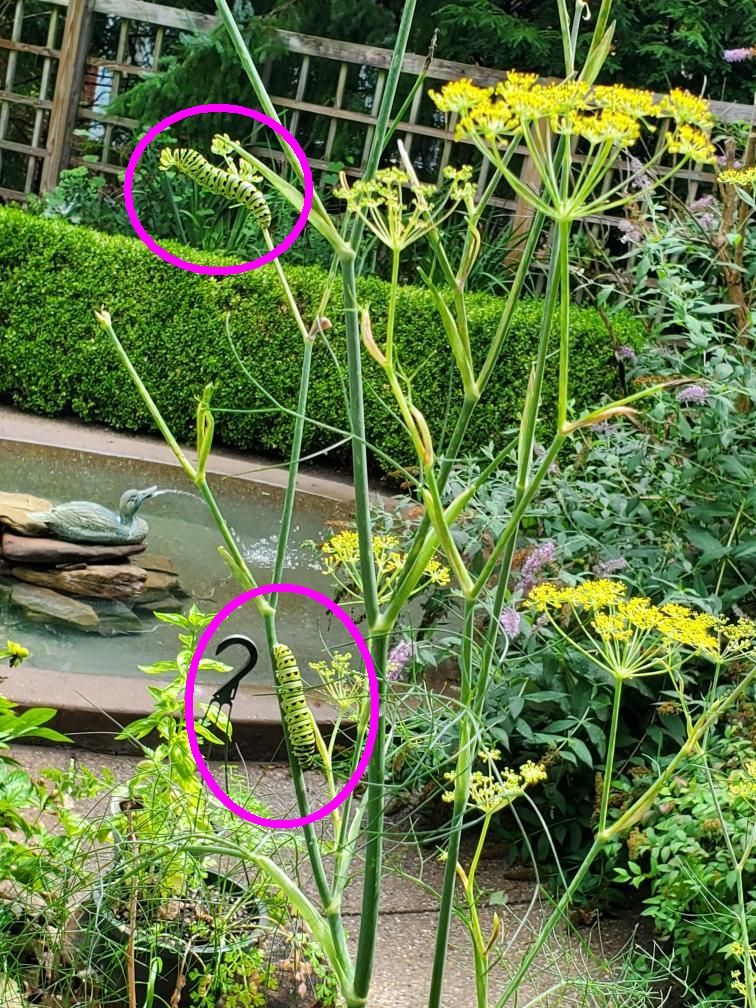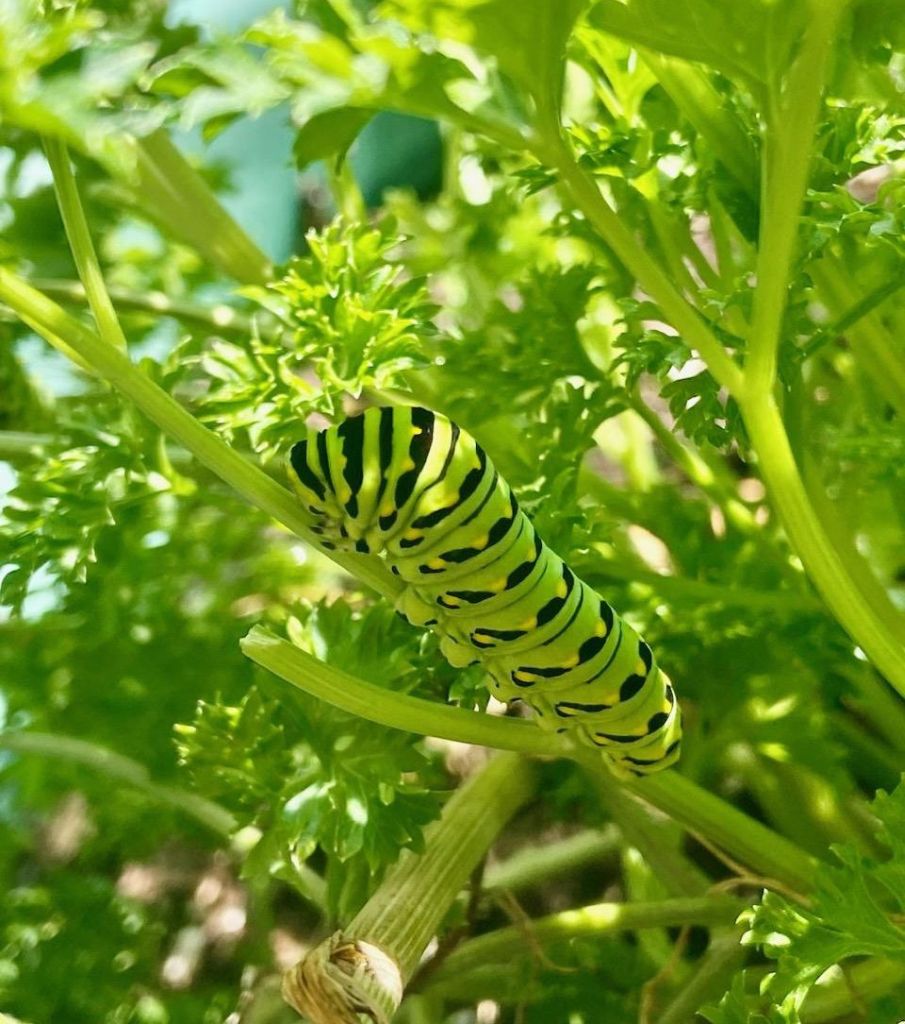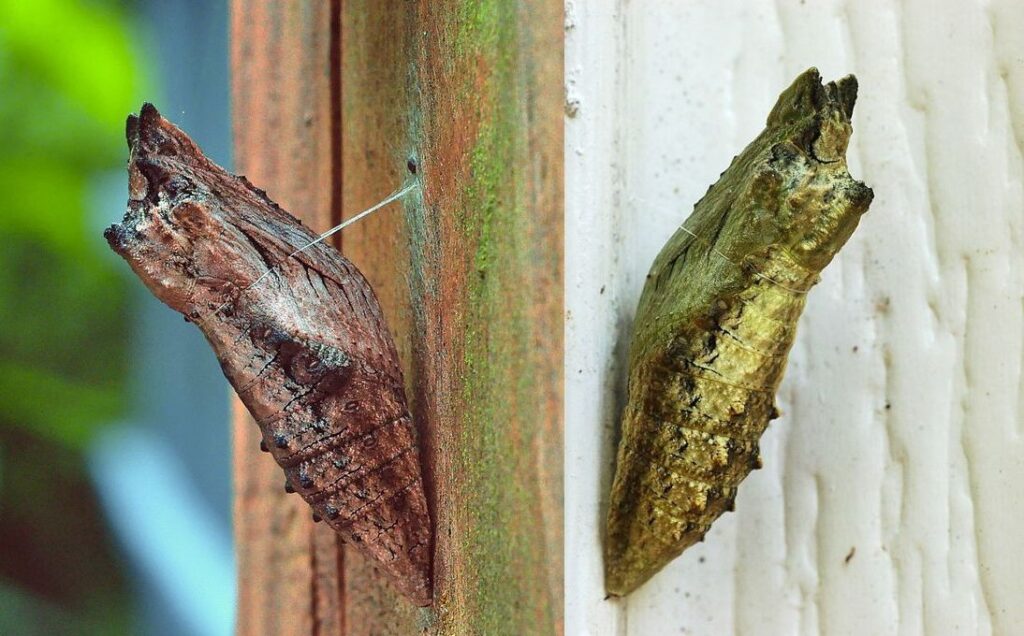
3 August 2023
After Wednesday’s report on the scarcity of monarch butterflies in southwestern Pennsylvania, yesterday brought happier butterfly news.
This week Donna Foyle and Betty Rowland both found black swallowtail caterpillars (Papilio polyxenes) on host plants in their gardens. Donna Foyle’s are on parsley. Betty Rowland’s are on fennel.

This success prompted a lively discussion of next steps.
#1. Birds, insects and spiders prey on black swallowtail caterpillars so the first step is to protect them. Birds are easy to exclude. Betty Rowland put a butterfly shelter over her fennel.

#2 What if the caterpillers eat all your host plants? Where can you get more? Well, don’t buy greens for your caterpillars! You can’t be sure they haven’t been treated with chemicals. Donna Foyle will look for Queen Anne’s (not near a road) if it she runs out of home-grown parsley.

When the caterpillar is ready to pupate it develops a somewhat camouflaged chrysalis, two examples shown below. (The brown one was photographed in Pittsburgh by Scott Detwiler.)

As adults, black swallowtails are sexually dimorphic …


… which is useful for their mating strategy.
The Papilio polyxenes demonstrates polyandry and a lek mating system, showing no male parental care and display sites. Females are therefore able to choose males based on these sites and males are the only resource the females find at these sites.
— Wikipedia: Black Swallowtail butterfly account
For loads more information about black swallowtails and photos of all their stages, see Wikipedia’s black swallowtail account.